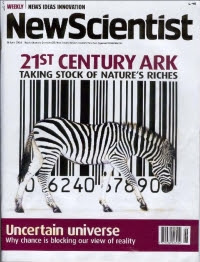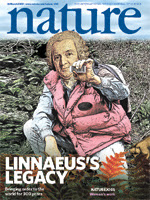There is a new article on the Wired website about junk DNA [One Scientist’s Junk Is a Creationist’s Treasure]. I make a very brief appearance in it, and I just want to clarify what I meant by the statement cited (I’m still learning that even an hour-long interview might result in only a short blurb).
My quote is “Function at the organism level is something that requires evidence”. I make this statement because there are several different sorts of DNA sequences in the genome whose presence can be explained even if they do not benefit (and indeed, even if they slightly harm) the organism carrying them. Pseudogenes, satellite DNA, transposable elements (45% of our genome), and other non-coding sequences may or may not be functional — that requires evidence — and some may exist as a result of accidental duplication or even due to selection at the level of the elements themselves (by “intragenomic selection”). The old assumption that all non-coding DNA must be beneficial to the organism or it would have been deleted by now ignores genome-specific processes by which non-coding DNA evolves.
As I have discussed previously, both hardcore adaptationists (if any exist anymore) and creationists have a vested interest in having all non-coding DNA be functional. I believe that real-world variability in genome size argues strongly against such a prospect, but of course it is possible, and this is the point that people like Ohno, Doolittle, Orgel, and Crick made in the 1980s. The important point is that yes, some non-coding DNA is functional at the organism level (as opposed to existing for its own sake or because there is no strong selection against it). And certainly, non-coding DNA has effects at the organism level. But current evidence suggests that about 5% of the human genome is functional, and even the least conservative ENCODE participants (whose primary, and important, objective is to identify the functional elements and their features) are betting that 20% is functional.
In the end, it is obvious that non-coding DNA is the product of evolution whether it all turns out to be functional or not. The cases in which former parasites (transposons) have taken on function at the organism level are a perfect illustration of cooption, which is the same basic process that allows explanations for the evolution of complex structures like eyes or flagella. The research into function of non-coding DNA, which the creationists are eager to cite, can be carried out only under an evolutionary framework — it is meaningless to talk about “conserved non-coding DNA sequences” otherwise.
Finally, let me say one thing about Francis Collins’s quote: “Think about it the way you think about stuff you keep in your basement. Stuff you might need some time. Go down, rummage around, pull it out if you might need it.” With all due respect (which is considerable, given his contribution to the Human Genome Project), it makes no sense to explain the existence of non-coding DNA because it might someday prove useful. Evolution does not work that way. Elements might be coopted, but maintaining this option explains neither the origin nor the persistence of non-coding sequences.
As to what the creationists have to say, well, I leave that to others with more (or less?) patience to attend to.
____________
Updates:
- Larry Moran takes the article apart in his inimitable way.
- PZ Myers is likewise unimpressed.
- Catherine Shaffer holds her own in the comments at Wired.
- Larry posts his reply.
- Steve Reuland on Panda’s Thumb clarifies some important issues. See also here.








